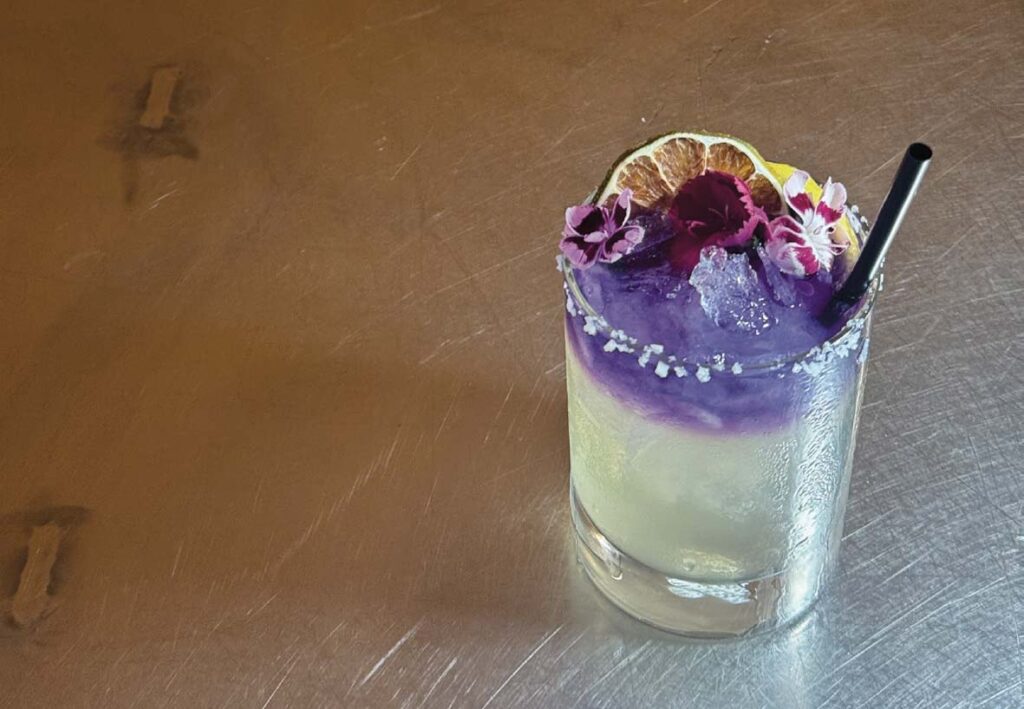
PHOTO BY ROBERT ELIASON
In a town full of taco trucks, taquerias and traditional Mexican restaurants, Hollister’s Las Micheladas Bar & Grill finds identity by way of Baja seafood dishes that embrace Japanese influence.
Co-owner David Ramirez celebrates the heritage of what results.
“We explore the 100-year-old traditions of the Puerto Vallarta and Sinaloa seafood industries,” he says. “We put them together to create a fusion which is based on the ingredients we import from Mexico, which you cannot duplicate elsewhere anywhere in the world.”
Bold words, yes. Bold flavors, yes again.
Born in Michoacán, Mexico, Ramirez came to the United States in 1994. His interest in Japanese food led him to train with San Francisco Bay Area chefs who, per Ramirez, demonstrate more than sashimi dexterity.
“I learned customs and the skill sets for the sushi business,” he says. “And I became more literate with what the Japanese and Mexican culinary sides offered.”
One key to his seafood items proves easily apparent, namely the high quality and big size of the shrimp he curates from Mexico through Grupo Rio Yaqui.
“The Pacific Coast of Mexico is blessed with a temperature that allows shrimp to grow to their sturdiness,” he says. “This crunch and the texture allow Pacific shrimp to stand out from every other shrimp in the world.”
The signature dish at Las Micheladas is camarones algobien, skinned shrimp deep-fried in tempura and topped with a spicy house mayo and sushi sauce. Their counterpoint is the camarones zarandados, with shrimp still in the shell, and sautéed with Mexican red chile peppers. “The [algobien] ultimately jumps into the whole of Japanese flavors,” Ramirez says. “It really catches you up with this style. The [zarandados] represents Nayarit and highlights the local demographics we tie into. They’re the best of both worlds.”
The sushi menu shows a similar flair for fusion. The top seller is the Hot Cheetos Roll, containing spicy crab, cream cheese and shrimp tempura, topped with avocado and zingy crumbs of the popular corn snack, then drizzled with spicy mayo and unagi sauce.
“It’s got the tempura, a crunch and the shrimp itself,” he says, noting Michoacanans love sushi combined with Mexican ingredients. “It seems like they were always meant to be together, right?”
As its name implies, the restaurant offers various micheladas, including an extravagant Super Michelada, made with a choice of beers, a shot of tequila, clamato mix and 12 cooked shrimp. It also crafts additional drinks boasting complex mixes, syrups and elixirs, like the house-made butterfly flower liqueur.
While fusion dishes comprise most of the menu, Ramirez contends birra is the backbone of his restaurant—and has helped define the family nature of the business.
The 100-year-old recipe used, based on slow-cooked chuck roll and beef knuckle, comes from his grandmother, Maria del Refugio Cuquita.
“I’m very blessed to continue on her legacy, from how she would toast her spices [to] the many things that go into the seasoning,” he says. “Ultimately, the connection between the food and the love is important, so the customer can feel the energy we put into making it.”
The top seller is the quesabirria, which Ramirez keeps at $11.95 as a nod to his upbringing, when his family picked strawberries and money was tight.
“I want everybody in my community to be able to afford one plate when they come here,” he says. “It’s one of my grandmother’s recipes that I want everybody to taste.”
About the author
Robert Eliason is a documentary photographer and photojournalist and has been based in San Juan Bautista for the last 12 years. Recently he has been doing extensive reporting on the wineries, breweries and specialty food companies of San Benito County, and is documenting the history of the Cienega Valley wine region.
- Robert Eliasonhttps://www.ediblemontereybay.com/author/kfeldmanklein/
- Robert Eliasonhttps://www.ediblemontereybay.com/author/kfeldmanklein/
- Robert Eliasonhttps://www.ediblemontereybay.com/author/kfeldmanklein/
- Robert Eliasonhttps://www.ediblemontereybay.com/author/kfeldmanklein/



